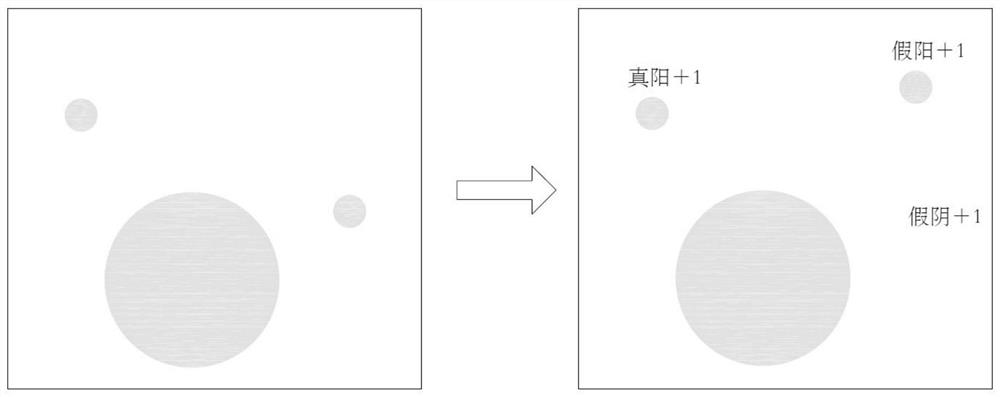Sample Evaluation Method and Model Training Method of Coronary Artery Segmentation Model
A technology for segmenting models and training methods, applied in image analysis, character and pattern recognition, instruments, etc., can solve problems such as unrobust post-processing links, and achieve robust results
- Summary
- Abstract
- Description
- Claims
- Application Information
AI Technical Summary
Problems solved by technology
Method used
Image
Examples
Embodiment 1
[0026] The invention discloses a sample evaluation method of a coronary artery segmentation model, comprising:
[0027] S1. Input samples to train the 3D coronary artery segmentation model to obtain volume prediction data for coronary artery segmentation;
[0028] S2. Slice the sample and its corresponding volume prediction data along the Z direction, and calculate the score of each slice:
[0029] S21. Marking the sample slices;
[0030] S22. Comparing the sample slice marking result with the corresponding volume prediction data slice result to obtain the score of the sample slice: if the volume prediction data slice is segmented at the mark position corresponding to the sample slice, then add 1 to the true positive number; If the data slice does not appear to be segmented at the marked position corresponding to the sample slice, then the false negative number will be increased by 1; if the volume prediction data slice is segmented at the marked position not corresponding to...
Embodiment 2
[0033] The present invention also provides a training method for a coronary artery segmentation model, comprising:
[0034] S1. Utilize the sample evaluation method of the coronary artery segmentation model as described in embodiment 1 to evaluate all samples in the current training period, and obtain the score of each sample;
[0035] S2. Classify samples with different scores, and adopt different training strategies for samples of different classes.
[0036] Sample classification can be based on the following ideas:
[0037] a. Score and count the average of each sample, evaluate the samples with a score lower than the average as difficult samples, and evaluate the samples with a score greater than or equal to the average as easy samples;
[0038] b. Arrange the samples according to their scores, select the sample with the lowest score according to the set ratio (set to 5% in this embodiment), and evaluate it as a difficult sample, and evaluate the remaining samples as easy...
Embodiment 3
[0049] The present invention also provides another training method for a coronary artery segmentation model, including:
[0050] S1. Perform multiple trainings under different conditions for each sample;
[0051] S2. Using the sample evaluation method of the coronary artery segmentation model as described in embodiment 1 to score the samples trained to a certain period each time or after training, so that each sample can obtain multiple scores;
[0052] S3. Perform mean value calculation or voting on each sample to obtain a comprehensive score for each sample;
[0053] S4. Classify the comprehensive score of each sample, and adopt different training strategies for samples of different classes.
[0054] The different training strategies are carried out with reference to Example 2.
PUM
 Login to View More
Login to View More Abstract
Description
Claims
Application Information
 Login to View More
Login to View More - R&D
- Intellectual Property
- Life Sciences
- Materials
- Tech Scout
- Unparalleled Data Quality
- Higher Quality Content
- 60% Fewer Hallucinations
Browse by: Latest US Patents, China's latest patents, Technical Efficacy Thesaurus, Application Domain, Technology Topic, Popular Technical Reports.
© 2025 PatSnap. All rights reserved.Legal|Privacy policy|Modern Slavery Act Transparency Statement|Sitemap|About US| Contact US: help@patsnap.com

